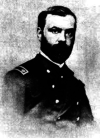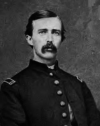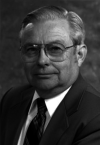Origins of the Armed Forces Medical Examiner System
- PMID: 32983291
- PMCID: PMC7495678
- DOI: 10.1177/1925362120937916
Origins of the Armed Forces Medical Examiner System
Abstract
The Armed Forces Medical Examiner System (AFMES) is the only medicolegal death investigation system of the US federal government. Its origins can be traced to three dried tissue specimens placed on a shelf by a Civil War Surgeon General in 1862. The collections and the library of the Army Surgeon General spawned the Armed Forces Institute of Pathology (AFIP), the National Museum of Health and Medicine, the Walter Reed Army Institute of Research, and the National Library of Medicine. Pathologists of the Army Medical Museum performed the autopsies of assassinated Presidents Lincoln and Garfield and assisted with that of Kennedy. The now defunct AFIP created the first forensic pathology training program approved by the American Board of Pathology and then the AFMES. Col Ed Johnston, CAPT Charlie Stahl, and Col Dick Froede were the original pioneers of the AFMES.
Keywords: Armed Forces Medical Examiner System; Froede; Stahl; forensic pathology history; military.
© The Author(s) 2020.
Figures














References
-
- Shyrock RH. Eighteenth century medicine in America. Proc Am Antiquarian Soc. 1950;59(2): 275–292. https://www.americanantiquarian.org/proceedings/44807198.pdf (accessed 24 July 2020).
-
- Flexner A. Medical education in America: rethinking the training of American doctors. The Atlantic. June, 1910 https://www.theatlantic.com/magazine/archive/1910/06/medical-education-i... (accessed 24 July 2020).
-
- The first American medical school: the formative years. Lancet. 2015;385(9981):1940–1941. doi:10.1016/S0140-6736(15)60950-3 - PubMed
-
- Gillett MC. The Army Medical Department, 1775-1818. U.S. Army Center of Military History. U.S. Government Printing Office; 1981. https://history.amedd.army.mil/booksdocs/rev/gillett1/default.html (accessed 24 July 2020).
-
- Craig SC. “Some System of the Nature We Have Here Proposed”: Joseph Lovell’s Remarks on the Sick Report, Northern Department, US Army, 1817 and the Rise of the Modern. US Army Medical Department, Borden Institute; 2015. https://www.cs.amedd.army.mil/FileDownloadpublic.aspx?docid=4924587d-a69... (accessed 24 July 2020).
Publication types
LinkOut - more resources
Full Text Sources
